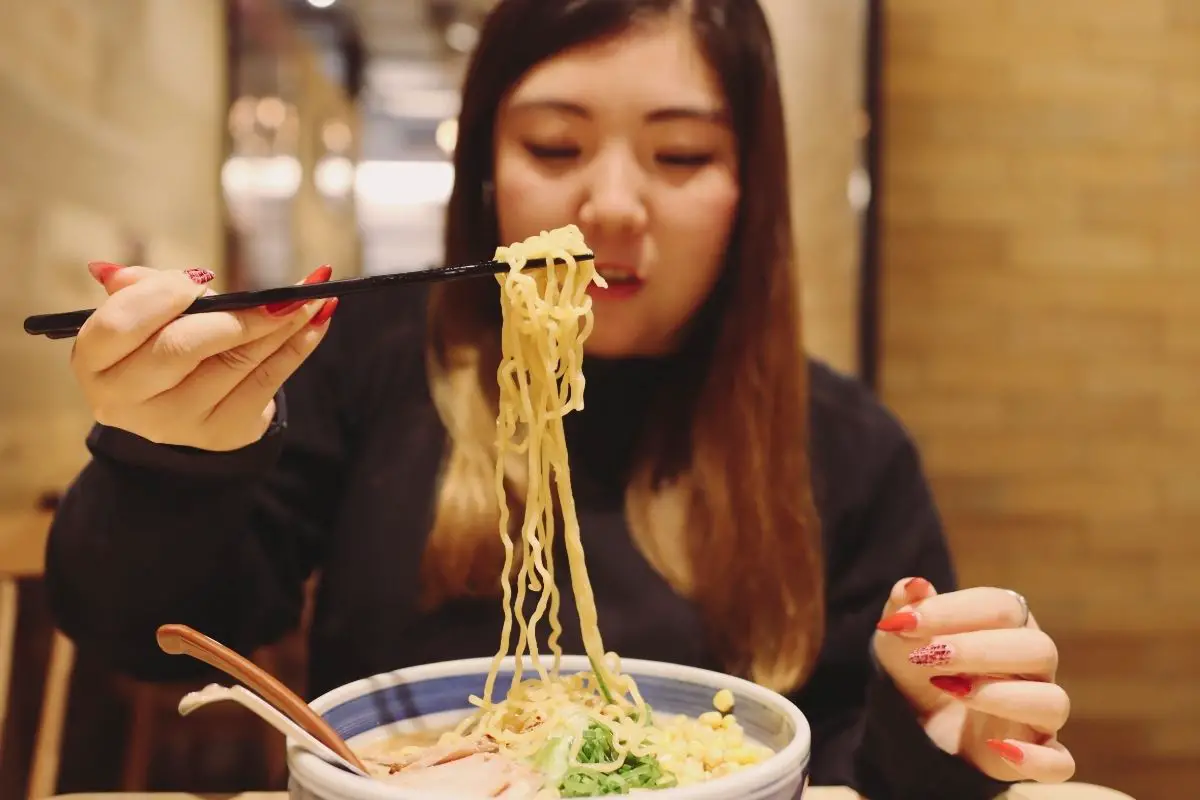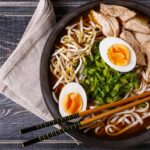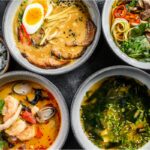Even though the word “ramen” in Japanese means “pulled noodles,” when we use the term, we also refer to the delicious dish that has gained so much popularity around the world.
The key ingredient is the distinctive kansui noodles, which are presented in a lovely broth and embellished with a variety of toppings.
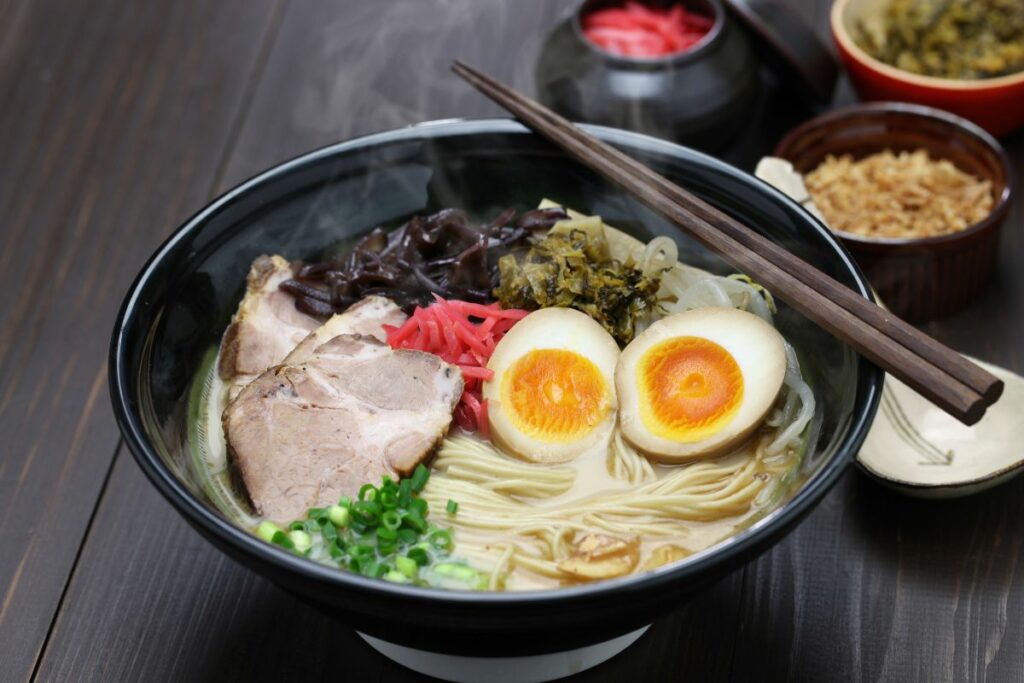
Ramen has an extensive history and there is so much that lead up to the creation of the incredible dish we eat today. But where exactly did ramen come from?
In this article, we’ll tell you about the origins of ramen and everything you need to know about this noodle-based dish. So, let’s dive in!
The Origins Of Ramen
It began in China in the 1800s, which is regarded as the birthplace of ramen. After the Meijiichin in 1868, the concept of noodles in a soupy broth was brought to Japan by Chinese immigrants in the late 19th or early 20th century.
Chinatowns like the one in Yokohama, a bustling port city that contributed to the development of ramen’s appeal throughout Japan, sprang up as soon as the Chinese arrived in the country.
After the war, bread and wheat consumption in Japan soared, and wheat was used to make ramen noodles. By 1950, yatai, or outdoor street vendors, had expanded across towns and cities, providing workers with a quick hot meal at all hours of the day and night.
These yatai were increasingly serving ramen noodles.
The development of instant noodles in 1958 by Momofuku Ando, the Taiwanese-Japanese creator of Nissin Foods, was a significant turning point for lovers of ramen. This made it possible for everyone to quickly prepare this dish at home.
Ramen was researched all over the world after it rose to fame in Japan in the 1980s. Local ramen variants started to appear on the market at the same time and may even be ordered using their regional names.
It is quickly becoming a popular dish all over the world, with restaurants and bars specializing in this wonderful comfort food. There are 24,000 ramen establishments in Japan alone, including 5,000 just in Tokyo.
The Different Variations Of Ramen
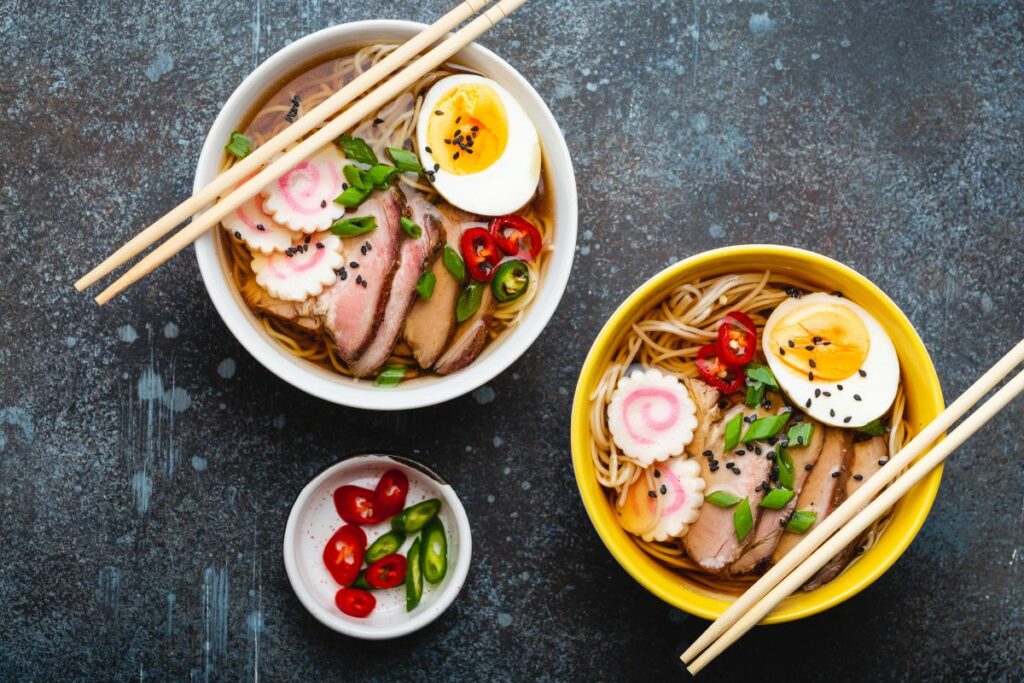
An amazing thing about ramen is that it comes in so many different varieties and flavors! The type of ramen you have will depend on three main factors: the soup broth, the noodles, and the toppings you add to the dish.
Soup
Ramen soup is typically made with chicken or pork stock and a variety of other ingredients, including beef bones, shiitake mushrooms, onions, kombu, katsuobushi, and niboshi. Some contemporary ramen broths can also be made with vegetables.
Ramen soup comes in four different main varieties, each with its own distinct flavor. They are:
- Miso – The name of the dish, miso ramen, comes from Hokkaido’s Sapporo region and refers to its key ingredient. This broth has an opaque appearance and a powerful, savory flavor. Miso paste is available in many other varieties as well.
- Shio – Shio is Japanese for salt, and this kind of ramen is typically light and translucent. It is frequently made by simmering chicken bones, and ingredients like dried sardines, dashi stock, and bonito flakes are used to flavor it.
- Shoyu – The Japanese word for soy sauce is shoyu, and this particular style of noodle dish was the foundation of ramen and is still popular today. Although there are many distinct kinds of shoyu ramen, the flavor is often salty and sour.
- Tonkotsu – Tonkotsu ramen, which has its roots in modern-day Fukuoka and lends Tokyo’s Asakusa neighborhood its delectable aroma, is prepared by simmering pork bones for hours to give the tonkotsu broth a creamy, hazy appearance.
- Tsukemen – Tsukemen soup comes in a wide range of flavors, from shellfish to salty pork broth. These robust, thick ramen noodles are cooked, dropped into a bowl of tare ramen broth, and then served. As you dip the noodles, the rich soup coats each one with delectable flavor.
Noodles
Wheat flour, water, salt, and the special ingredient kansui give ramen noodles their unique savory goodness. Potassium and sodium carbonates are found in kansui, an alkaline water.
This is the source of the distinctive flavor, vibrant golden color, and springy firmness of ramen noodles.
Ramen’s name, which means “pulled noodles,” gives a hint as to how they are created. To get a lump of dough to the proper length and thickness, it would have been stretched and folded numerous times.
The two main types of ramen noodles are low alkaline, which is denser, heavier, and has a stronger wheat flavor, and high alkaline, which is lighter.
Whereas thick or wavy noodles are more likely to be low in alkalinity and have less spring in them, thin noodles are more likely to be highly alkaline and have more bounce in them.
Toppings
Ramen can be seasoned and flavored with a variety of toppings. When it comes to additional ingredients, there is no right or wrong choice, although these are the most common:
- Bean or other sprouts
- Butter
- Chāshū (sliced barbecued or braised pork)
- Corn
- Kakuni (braised pork cubes or squares)
- Kamaboko (formed fish paste, often in a pink and white spiral called narutomaki)
- Kikurage (wood ear mushroom)
- Menma (lactate-fermented bamboo shoots)
- Negi (green onion)
- Nori (dried seaweed)
- Olive oil
- Other types of vegetables
- Seasoned boiled egg
- Sesame oil
- Soy sauce
- Squid
- Takana-zuke (pickled and seasoned mustard leaves)
- Umeboshi (pickled plum)
- Wakame (a type of seaweed)
Final Thoughts
The origin of ramen is fascinating. With its delicious flavor and comforting warmth, it’s no surprise that it has become a fast favorite around the world. Brought from China to Japan, you can find an incredible variety of flavors in ramen, thanks to the journey it’s taken over the recent years.

